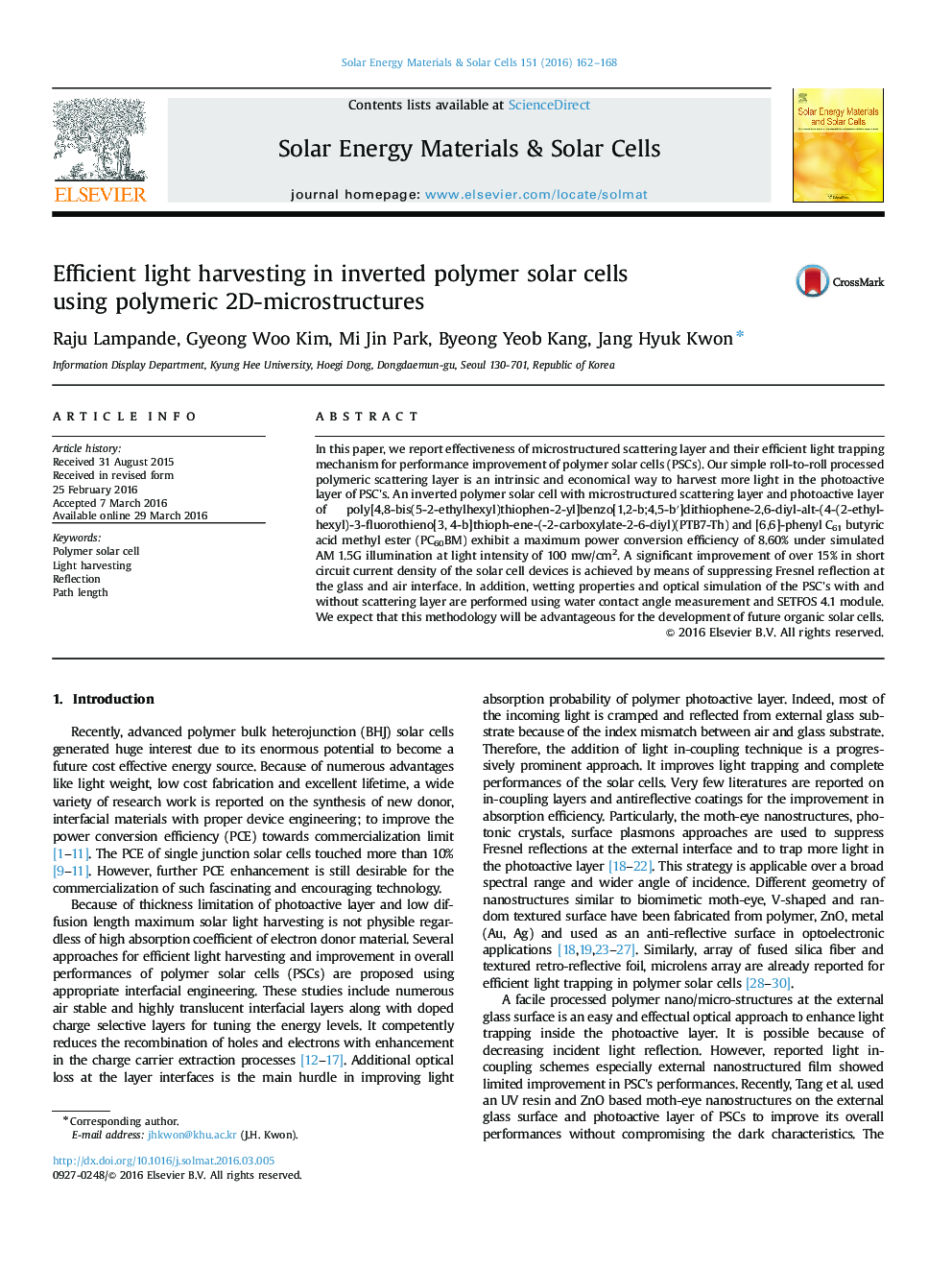| Article ID | Journal | Published Year | Pages | File Type |
|---|---|---|---|---|
| 77616 | Solar Energy Materials and Solar Cells | 2016 | 7 Pages |
•An optical approach for light trapping.•Microstructured scattering layer for self-enhanced absorption in the active layer.•Enhanced optical properties of polymer solar cells.•More than 14% improvement in power conversion efficiency.
In this paper, we report effectiveness of microstructured scattering layer and their efficient light trapping mechanism for performance improvement of polymer solar cells (PSCs). Our simple roll-to-roll processed polymeric scattering layer is an intrinsic and economical way to harvest more light in the photoactive layer of PSC׳s. An inverted polymer solar cell with microstructured scattering layer and photoactive layer of poly[4,8-bis(5-2-ethylhexyl)thiophen-2-yl]benzo[1,2-b;4,5-b′]dithiophene-2,6-diyl-alt-(4-(2-ethylhexyl)-3-fluorothieno[3, 4-b]thioph-ene-(-2-carboxylate-2-6-diyl)(PTB7-Th) and [6,6]-phenyl C61 butyric acid methyl ester (PC60BM) exhibit a maximum power conversion efficiency of 8.60% under simulated AM 1.5G illumination at light intensity of 100 mw/cm2. A significant improvement of over 15% in short circuit current density of the solar cell devices is achieved by means of suppressing Fresnel reflection at the glass and air interface. In addition, wetting properties and optical simulation of the PSC׳s with and without scattering layer are performed using water contact angle measurement and SETFOS 4.1 module. We expect that this methodology will be advantageous for the development of future organic solar cells.
Graphical abstractFigure optionsDownload full-size imageDownload as PowerPoint slide
